Rio tourists learning to explore favela life
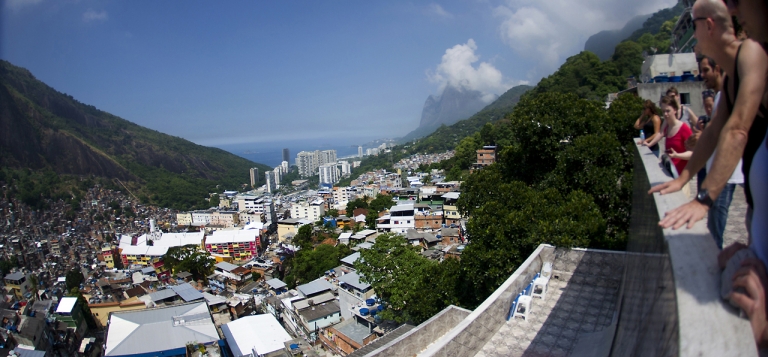
RIO DE JANEIRO -- High atop the peaks surrounding Rio de Janeiro, a concrete summit of rust-hued rooftops and balconies juts out at all angles from houses stacked like haphazard piles of storage crates. Canopies of electrical wires tangled with clotheslines hang above kids playing pickup soccer in sandals.
 On narrow, graffiti-lined streets, pedestrians compete for the right of way with motorcycle taxis that zip through traffic over rollercoaster roadways. On some corners, a wrong step could send you tumbling into an open canal filled with floating garbage.
On narrow, graffiti-lined streets, pedestrians compete for the right of way with motorcycle taxis that zip through traffic over rollercoaster roadways. On some corners, a wrong step could send you tumbling into an open canal filled with floating garbage.
A far cry from the famous Christ the Redeemer statue or the luxury Copacabana Palace Hotel, crowded slum communities called favelas on the hillsides of Rio are making a name for themselves as unlikely stops for visitors looking to get a glimpse of life beyond the bars and beaches in Brazil’s second largest city and its hotspot for tourism.
Groups of foreign tourists – and increasingly, Brazilians themselves – are flocking wide-eyed into Rio de Janeiro’s favelas to spend a night at a bed and breakfast, to sample local cuisine, to take a graffiti workshop or to spend an afternoon playing paintball. In some cases, visitors are settling into these neighborhoods for weeks at a time at venues like Casa Alto Vidigal – a favela home-turned-hostel that also lures crowds with its bar and rooftop deck overlooking the city.
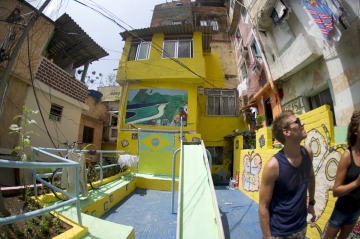 But most commonly, tourists come for a few hours at a time to see what it’s like to live in towns with a reputation for crowding, crippling poverty and clashes between drug gangs and police. To get a closer look beyond the hype, they tag along on treks ranging from government-registered tours that have been in the business for years to guided hikes with 27-year-old American students who run part-time tour operations under the table for extra cash.
But most commonly, tourists come for a few hours at a time to see what it’s like to live in towns with a reputation for crowding, crippling poverty and clashes between drug gangs and police. To get a closer look beyond the hype, they tag along on treks ranging from government-registered tours that have been in the business for years to guided hikes with 27-year-old American students who run part-time tour operations under the table for extra cash.
Home to millions of Rio’s poorest residents, the favelas have long been viewed as off-limits even to Brazilians. Made infamous by films like City of God and Elite Squad, the mere mention of them still sometimes provokes looks of apprehension and dread.
Those who call them home beg to differ.
“Rocinha is a normal place, an interesting place, an average place,” said 22-year-old Erik Martins, describing Rio’s largest favela, where he lives and works as a tour guide part-time. “Rocinha is many worlds in one world."
 Until last year, Rocinha was largely controlled by drug gangs. In November 2011, though, authorities in Rio wrested control of the community through a process dubbed “pacification”– already underway for several years in other favelas across Rio – though neighborhood residents say that the accuracy of that phrase is debatable.
Until last year, Rocinha was largely controlled by drug gangs. In November 2011, though, authorities in Rio wrested control of the community through a process dubbed “pacification”– already underway for several years in other favelas across Rio – though neighborhood residents say that the accuracy of that phrase is debatable.
“[Rocinha] was more busy, more messy – not more violent,” Martins said.
In recent months, you can find hulking vehicles labeled “MILITAR” parked on Rocinha curbs and men in bulletproof vests scattered across street corners, weapons slung across their chests – and it doesn’t appear as though the police presence is fading anytime soon. Citing increased tourist traffic and rising popularity in Rocinha’s nightlife as factors in the decision, the police announced in March that they were sending 130 officers to patrol the community.
Martins – who spends much of his time working as a health aide, nursing neighbors with tuberculosis and other ailments – said he can’t blame people for coming into favelas expecting to find danger or misery, but he hopes that by the time they leave they find common ground instead.
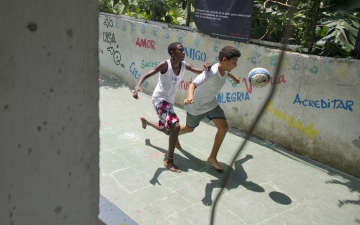 “We have a story,” said 25-year-old Davila Pontes, who lives in Rio’s largest favela, Rocinha. “There are those who want to know us, but others who just want to pay and come and go out.”
“We have a story,” said 25-year-old Davila Pontes, who lives in Rio’s largest favela, Rocinha. “There are those who want to know us, but others who just want to pay and come and go out.”
Her neighbors, she said, deserve a chance to share their side of that story with the rest of the world — as long as it’s done correctly.
She thinks tourism could serve as one tool to break stereotypes often projected on communities like hers. But she worries about the kind of tourism that only offers a surface-level view of Rocinha, instead of promoting interaction between tourists and neighborhood residents.
 “Rocinha doesn’t need to change,” Pontes said. “What must change is the relationship between the community and the tourists.”
“Rocinha doesn’t need to change,” Pontes said. “What must change is the relationship between the community and the tourists.”
A veteran of the favela tourism industry, Marcelo Armstrong runs twice-a-day excursions through his company Favela Tour. They follow a fairly consistent formula: For about $35 per person, white, air-conditioned minivans pick up patrons along a stretch of hotels in the heart of downtown Rio, shuttling no more than 12 visitors to Rocinha and a smaller neighboring favela for a part-driving, part-walking tour.
Trained guides like Leopoldo Chaves narrate the story of Rio’s favelas – noting, as the van full of tourists nears the edge of Rocinha, that crossing into this part of town from a more affluent bordering neighborhood is like traveling from Canada to Ghana. Later, inside the favela, he pauses his tour script occasionally to point out bullet holes on a nearby wall.
The three-hour excursion includes scheduled stops at a local craft fair, a detour to a rooftop terrace with a panoramic view of the city’s coastline and a trip to a nearby school that’s partially funded by revenue from the tours.
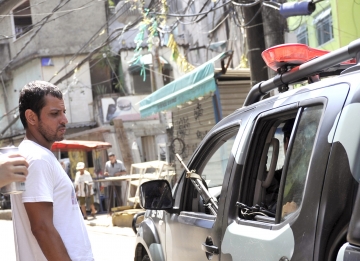 During the trip, tourists get an up-close look at police cruisers inching slowly through the main streets of town and an up-close smell of mountains of plastic trash bags that pile up on street corners. Along the way, tourists see a bustling portrait of daily life – people riding bicycles, pushing wheelbarrows, carrying groceries and toting backpacks en route to school. When the tour veers down back alleys past a row of open doorways, visitors are within earshot of kitchen conversations and can peer into the living rooms of Rocinha residents from only a few yards away.
During the trip, tourists get an up-close look at police cruisers inching slowly through the main streets of town and an up-close smell of mountains of plastic trash bags that pile up on street corners. Along the way, tourists see a bustling portrait of daily life – people riding bicycles, pushing wheelbarrows, carrying groceries and toting backpacks en route to school. When the tour veers down back alleys past a row of open doorways, visitors are within earshot of kitchen conversations and can peer into the living rooms of Rocinha residents from only a few yards away.
Favela Tour promotes itself as “informative and surprising, not voyeuristic,” and patrons like Nigel Parker seem to agree.
“I was a bit interested when we went in and it was obviously very cramped, and everybody’s sitting on top of each other – because I’ve been down to like places in like Sicily and Palermo and Naples and didn’t really see that same kind of stuff,” Parker said.
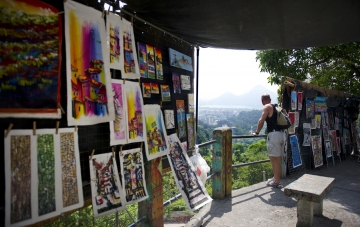 Parker, who lives in Sydney but is originally from England, said the tour caught his eye as he was flipping through his now well-worn travel book, The Rough Guide to Brazil. Combined with the other trips to Lapa, a section of Rio noted for its vibrant nightlife, and Sao Paolo, the country’s largest city and center of commerce, the favela tour allowed Parker to better “understand a few pieces that get put together around Brazil.”
Parker, who lives in Sydney but is originally from England, said the tour caught his eye as he was flipping through his now well-worn travel book, The Rough Guide to Brazil. Combined with the other trips to Lapa, a section of Rio noted for its vibrant nightlife, and Sao Paolo, the country’s largest city and center of commerce, the favela tour allowed Parker to better “understand a few pieces that get put together around Brazil.”
There’s another model found in the tours developed by Renato “Zezinho” da Silva, the 49-year-old son of a Brazilian father and American mother who was born in Rocinha and, after some years away, recently rekindled a fierce loyalty to his hometown. Today, he translates that love into running an independent tour company called Favela Adventures, which is operated entirely by Rocinha residents and uses part of its profits to fund Spin Rocinha, a DJ school that offers free classes to a handful of local youth.
 Zezinho – who has ROCINHA tattooed across his limbs in graffiti-style ink, his arms and legs also splashed with intricate sketches of the rows of favela homes like the ones in his neighborhood – prefers to think of himself as more of a “cultural educator” than a favela tour guide. In addition to walking visitors through the community, he also sometimes arranges individualized experiences that offer classes in martial arts or surfing, Portuguese lessons or a night at a local party, depending on the tourist’s interests.
Zezinho – who has ROCINHA tattooed across his limbs in graffiti-style ink, his arms and legs also splashed with intricate sketches of the rows of favela homes like the ones in his neighborhood – prefers to think of himself as more of a “cultural educator” than a favela tour guide. In addition to walking visitors through the community, he also sometimes arranges individualized experiences that offer classes in martial arts or surfing, Portuguese lessons or a night at a local party, depending on the tourist’s interests.
“I don’t receive the 18-year-old backpacker who wants to come and see guns, drugs and dead bodies,” he said.
He scoffs at the thought of jeep tours, scripts delivered by non-”favellanos” and groups of visitors more interested in gawking at the living conditions than getting to know the street vendors or sitting down at a local restaurant.
 “When you see a group of people riding in a van, it’s offensive,” he said, noting that he also has strict rules against taking pictures of favela residents without permission. “People are not animals.”
“When you see a group of people riding in a van, it’s offensive,” he said, noting that he also has strict rules against taking pictures of favela residents without permission. “People are not animals.”
Instead, he said he’s able to show visitors in groups of eight or less the best places to eat rotisserie chicken or to sample a beverage made with Brazil’s native acai berry, and he hardly hesitates to point out where he buys his shoes, shirts and cat litter.
“There are things you can’t hide, and I just think you need to tell it like it is,” Zezinho said. “I’m tired of people thinking I live in a [slum].”
The people of Rocinha aren’t that far off from everyone else, Zezinho, Martins and Pontes note – many residents have cars and LCD televisions, have steady jobs and participate in local community development programs.
For better or worse, these Rocinha residents said they hope those who go on the favela tours are able to peer past the favelas’ gritty exteriors and find common ground with the people who live in the communities.
“We have a story,” Pontes said, noting that tour groups might benefit from learning more about the communities’ architectural and artistic histories. “You are not exotic, we are not exotic.”
 Zezinho, meanwhile, embraces the chance to share some music from his baile funk collection – including one of his favorite tracks, “Rap da Felicidade,” familiar to those who listen closely to the soundtrack of the same “Elite Squad” film that offered global audiences a jarring portrait of favela life.
Zezinho, meanwhile, embraces the chance to share some music from his baile funk collection – including one of his favorite tracks, “Rap da Felicidade,” familiar to those who listen closely to the soundtrack of the same “Elite Squad” film that offered global audiences a jarring portrait of favela life.
While the percussive rhythm is the hallmark of the track, the lyrics are what strike a real chord with Zezinho.
“All I want is to be proud of living in the slums,” Zezinho sings along, smiling and translating loosely from Portuguese. “I want to be happy, to walk easily in the slum where I was born.”
Favela hotel provides chance for extended stays
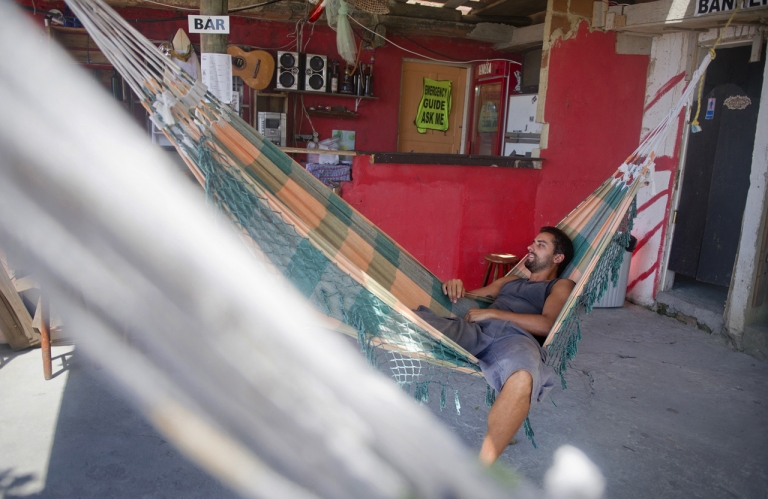
Austrian-born Andreas Wielend, in the hammock above, owns and operates Casa Alto Vidigal – a favela home-turned-hostel that lures crowds with its bar and rooftop deck overlooking the city. Here is a visual tour of what guests may find there. (Click photos to view captions)
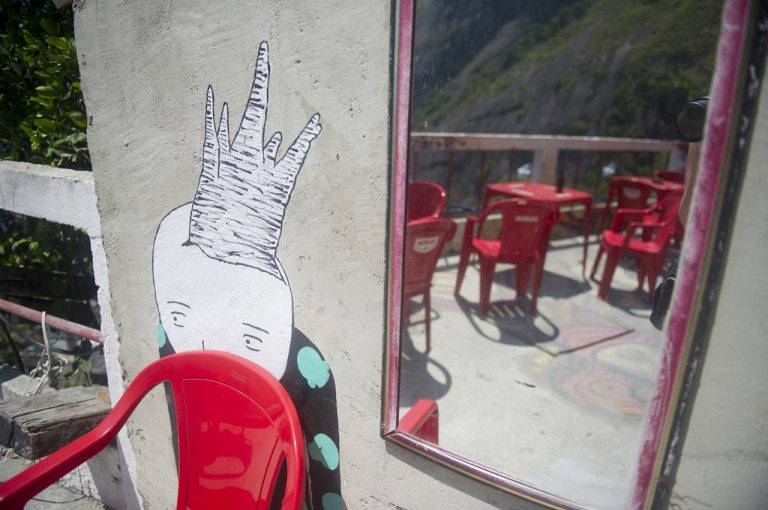

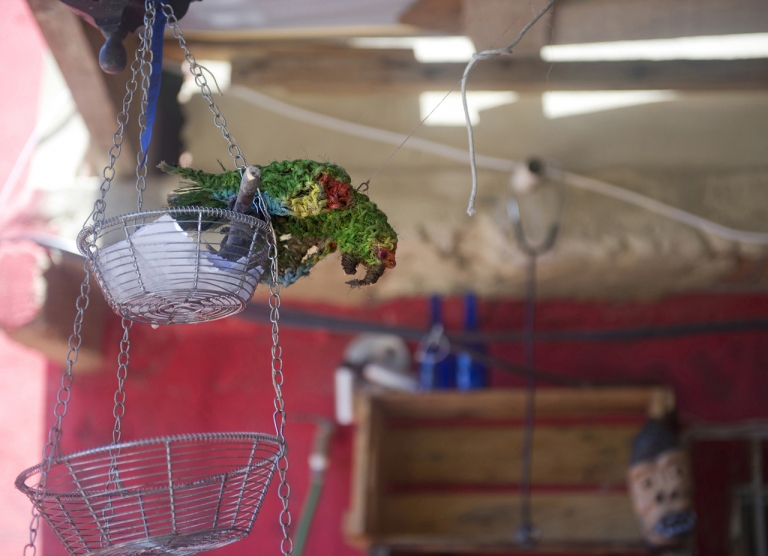
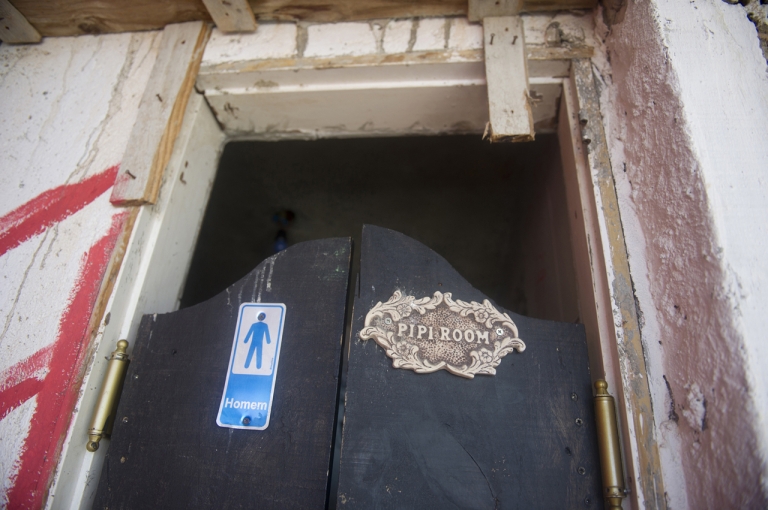

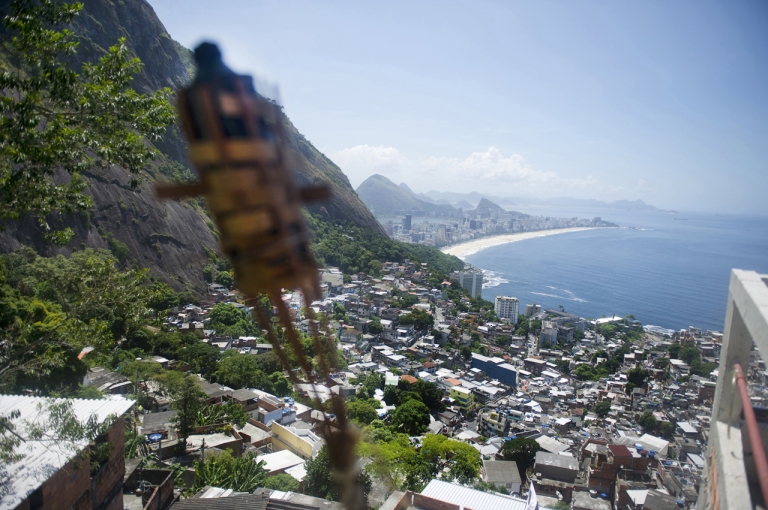
Touring the favelas
Favela is the Portugese word for slum, which is used to describe Rio de Janeiro neighborhoods built without city services. The housing in these neighborhoods ranges from shantytowns to relatively middle class abodes.

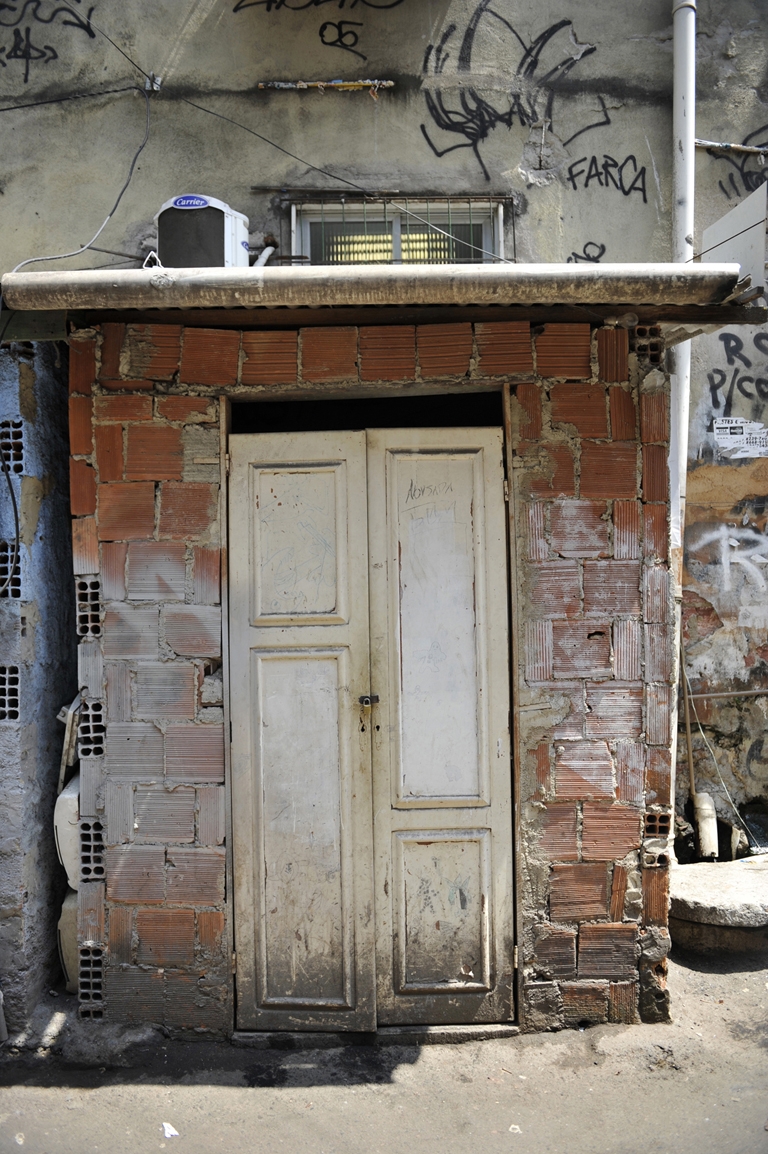


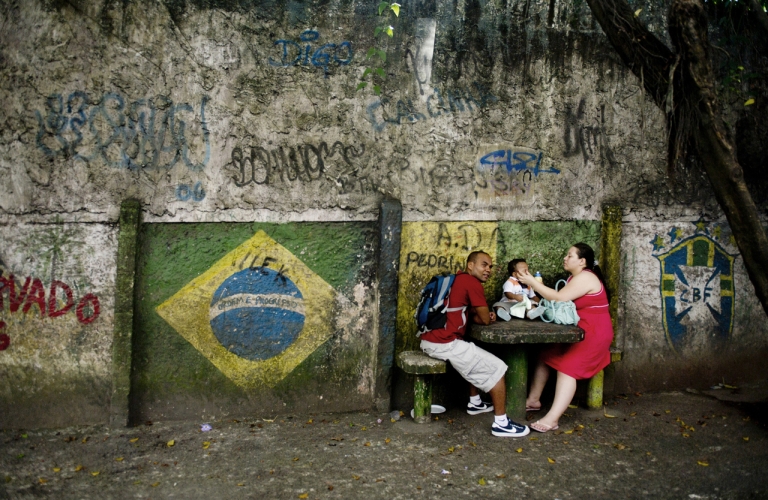



(Text by Casey McDermott. Photos by Chloe Elmer and Kelley King.)










